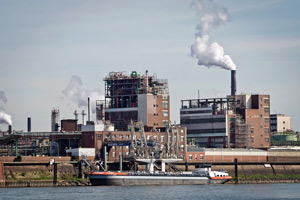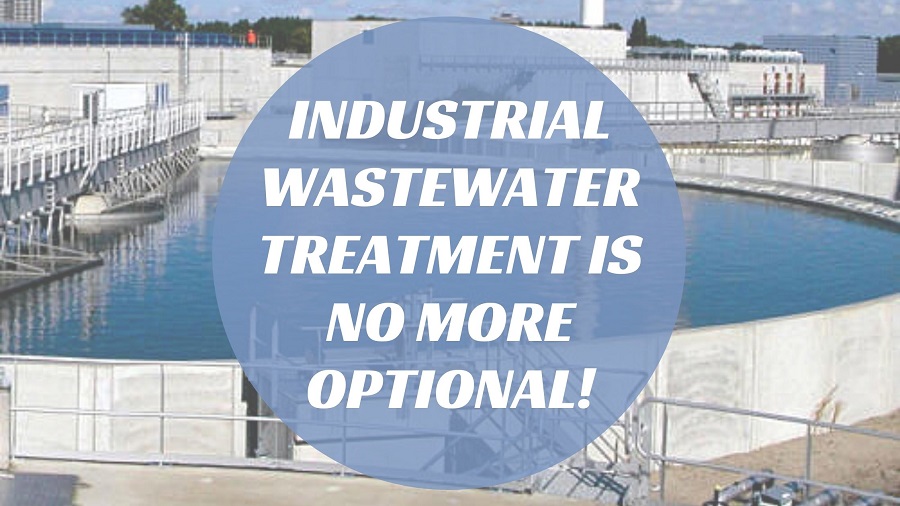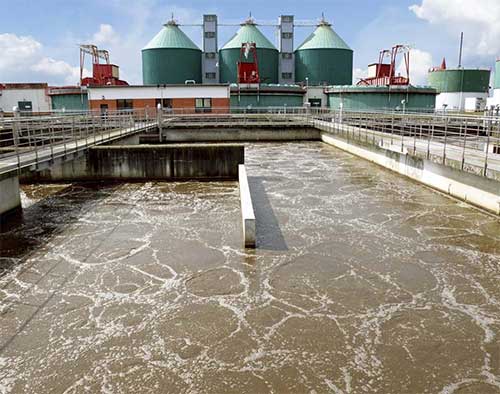Industrial Waste Water Treatment-- Comprehensive Equipments for Wastewater Disposal
Industrial Waste Water Treatment-- Comprehensive Equipments for Wastewater Disposal
Blog Article
Advancements and Advancements in Hazardous Waste Water Therapy Technologies
The landscape of commercial wastewater therapy is undertaking a transformative change, driven by technologies that boost both efficiency and sustainability. As regulatory standards evolve, the integration of AI and device knowing into wastewater management systems promises to improve operations and ensure conformity.
Review of Drainage Therapy Technologies
Wastewater therapy innovations include a variety of methods made to get rid of impurities from industrial effluents before their launch right into the atmosphere. These technologies are crucial for maintaining eco-friendly equilibrium and guaranteeing compliance with ecological guidelines. The main categories of wastewater therapy include physical, chemical, and biological approaches, each serving distinct objectives based on the nature of the contaminants existing.

Organic treatment methods utilize microbes to degrade raw material, making them especially reliable for organic-rich effluents. Strategies like activated sludge and biofilm reactors harness the natural deterioration capacities of microorganisms, leading to significant reductions in biochemical oxygen demand (BODY)
Advanced Filtering Methods
Advanced purification strategies stand for an important advancement in the realm of commercial wastewater treatment, improving the performance of impurity elimination procedures. Industrial Waste Water Treatment. These approaches incorporate an array of modern technologies, consisting of microfiltration, ultrafiltration, nanofiltration, and turn around osmosis, which give consecutive obstacles for different bit sizes and chemical structures
Microfiltration and ultrafiltration utilize membrane systems to get rid of put on hold solids, bacteria, and bigger natural particles, enhancing the high quality of effluent prior to further therapy. Nanofiltration links the void between ultrafiltration and reverse osmosis, effectively removing organic compounds and divalent ions, hence lowering the tons on downstream processes.
Reverse osmosis offers the highest degree of filtration by enabling only water and tiny molecules to pass through its semi-permeable membrane layers, making it excellent for redeeming top notch water from industrial effluents. Recent developments in membrane modern technology, including the development of even more fouling-resistant and durable products, have significantly boosted operational performance and minimized costs.
Including these advanced purification methods not just improves the total treatment procedure however additionally adds to sustainability initiatives by allowing water reuse and source healing in commercial settings. (Industrial Waste Water Treatment)
Organic Treatment Advancements

Additionally, the development of crafted biological systems, such as membrane layer bioreactors (MBRs), integrates biological therapy with sophisticated membrane purification. This integration enables greater effluent quality and lowered footprint, making it ideal for space-constrained industrial centers. Advancements in genetically engineered bacteria have additionally emerged, improving the biodegradation of specific impurities, such as pharmaceuticals and hefty metals, that are generally challenging to eliminate.
Additionally, the application of bioaugmentation you can try this out strategies, where valuable microbes are presented to enhance the existing biological therapy processes, has actually revealed promising lead to improving treatment efficiency. explanation These innovations jointly signify a pattern in the direction of more efficient and sustainable organic treatment approaches that can adjust to the evolving complexities of commercial wastewater streams. As sectors remain to prioritize environmental conformity, these organic developments will certainly play an essential role in wastewater administration.

Source Recovery Methods
In commercial settings, the integration of source recovery approaches has become progressively important for boosting sustainability and lessening waste. These methods concentrate on extracting beneficial materials and power from wastewater streams, thus changing prospective toxins into multiple-use resources.
One noticeable method is vitamins and mineral recovery, where nitrogen and phosphorus, usually present over in wastewater, are captured and exchanged fertilizers. This not just reduces environmental influences but likewise provides a circular economic situation solution for agricultural applications. In addition, technologies such as anaerobic food digestion permit the conversion of organic waste into biogas, a renewable resource source that can balance out nonrenewable fuel source use in industrial operations.
In addition, advanced filtering and membrane layer technologies help with the recuperation of commercial by-products such as salts and metals. These recuperated products can be rehabilitated into production procedures, reducing the need for virgin resources.
Future Patterns in Drainage Monitoring
As sectors increasingly prioritize sustainability, the future of wastewater management is readied to go through considerable makeovers. Technical advancements, such as synthetic intelligence and device knowing, will allow click here to find out more a lot more effective surveillance and administration of wastewater systems. These modern technologies can forecast upkeep requirements, enhance treatment processes, and enhance decision-making, ultimately reducing operational prices and ecological influence.
Additionally, the combination of circular economy principles will certainly play a crucial duty in wastewater monitoring. Industries are anticipated to move towards systems that not just deal with wastewater however likewise recover beneficial sources, such as nutrients, water, and power. This transition will decrease waste and advertise the reuse of materials, aligning with international sustainability objectives.
Emerging therapy methods, such as membrane bioreactors and progressed oxidation procedures, will further boost the efficiency of wastewater treatment, enabling higher quality effluents ideal for reuse. Furthermore, regulatory structures are likely to advance, highlighting stricter criteria for wastewater discharge and encouraging sectors to embrace innovative therapy services.
Verdict
In final thought, the advancement of industrial wastewater treatment modern technologies shows a significant shift in the direction of boosted performance and sustainability (Industrial Waste Water Treatment). Innovations in sophisticated purification techniques, biological treatments, and source recuperation approaches highlight the industry's commitment to environmental stewardship.
The landscape of industrial wastewater therapy is going through a transformative change, driven by technologies that boost both efficiency and sustainability.Wastewater treatment technologies encompass a variety of techniques created to get rid of impurities from commercial effluents prior to their release right into the environment.Harnessing the power of biological processes has led to significant innovations in the therapy of industrial wastewater.Furthermore, the execution of bioaugmentation strategies, where advantageous microorganisms are introduced to enhance the existing biological therapy procedures, has actually shown promising results in boosting therapy efficiency. These developments collectively signify a fad in the direction of more sustainable and efficient biological therapy techniques that can adjust to the developing complexities of commercial wastewater streams.
Report this page